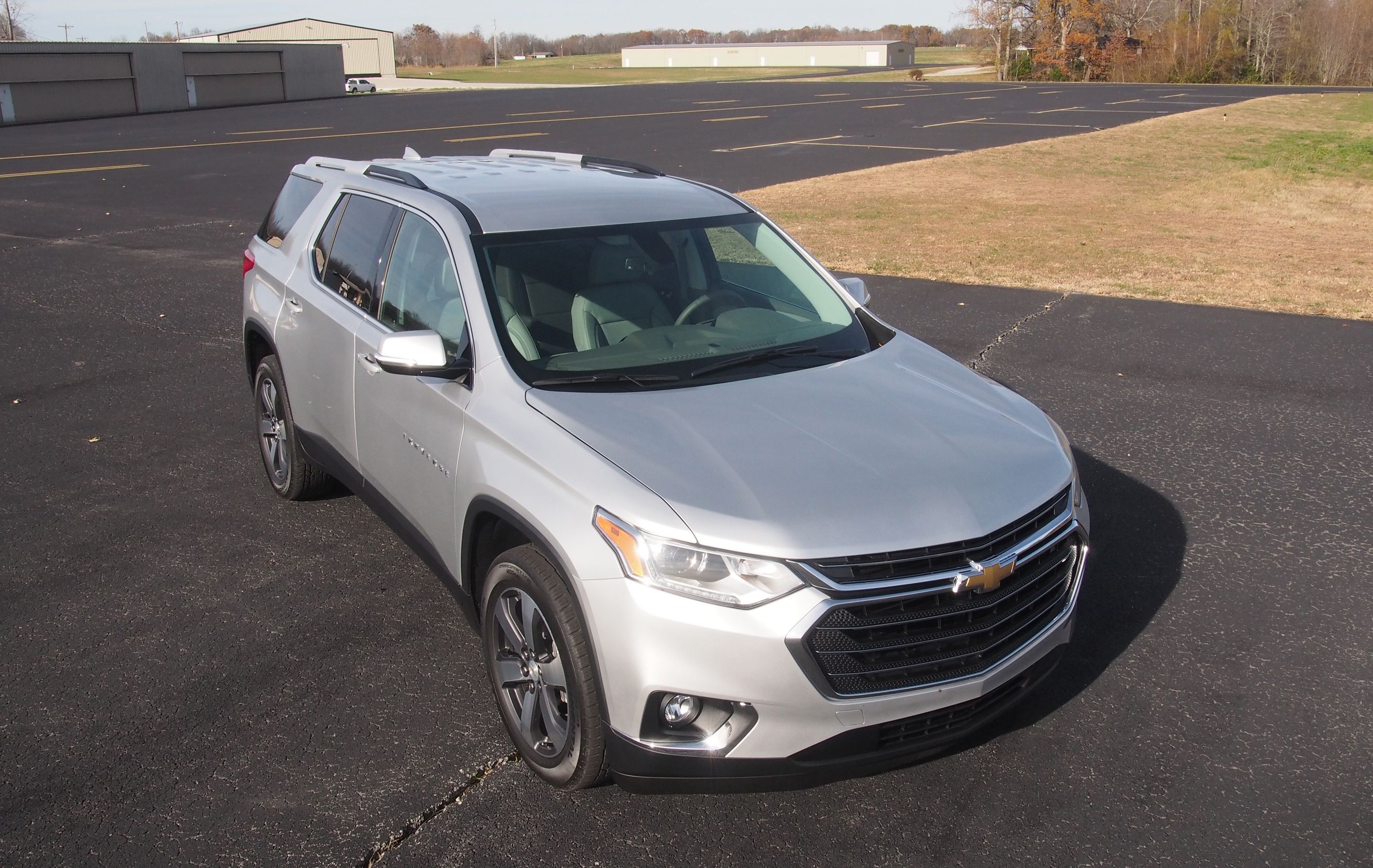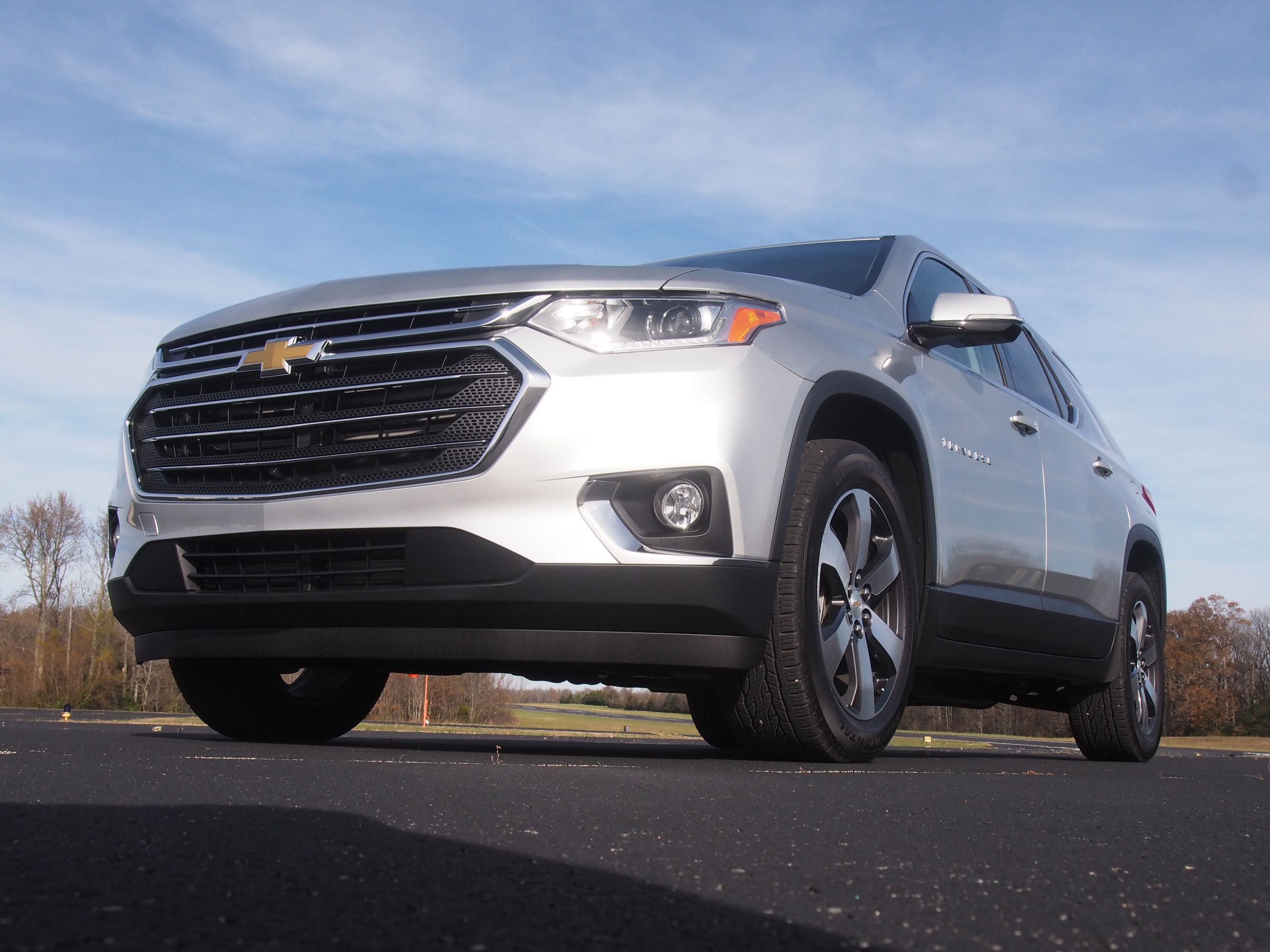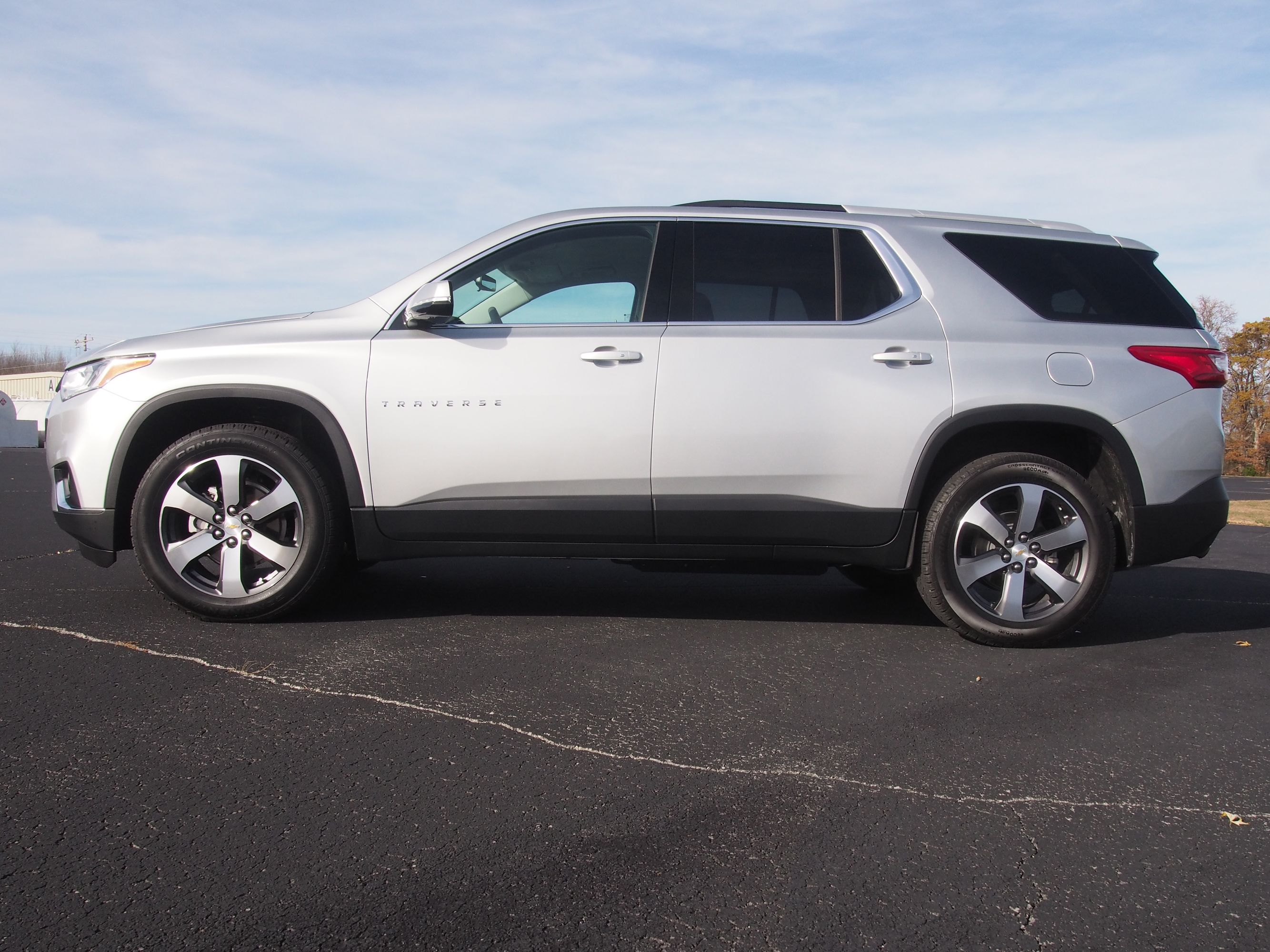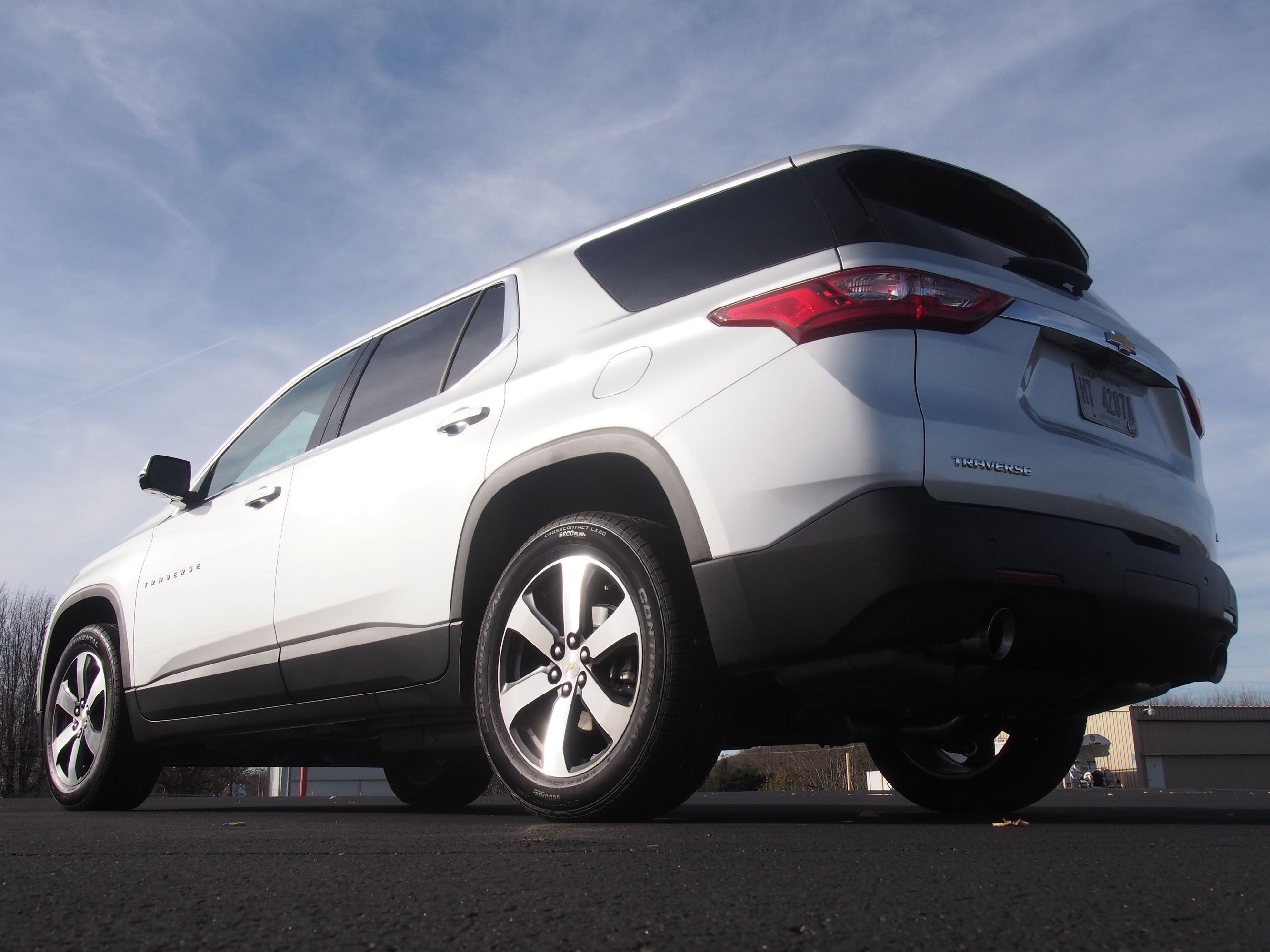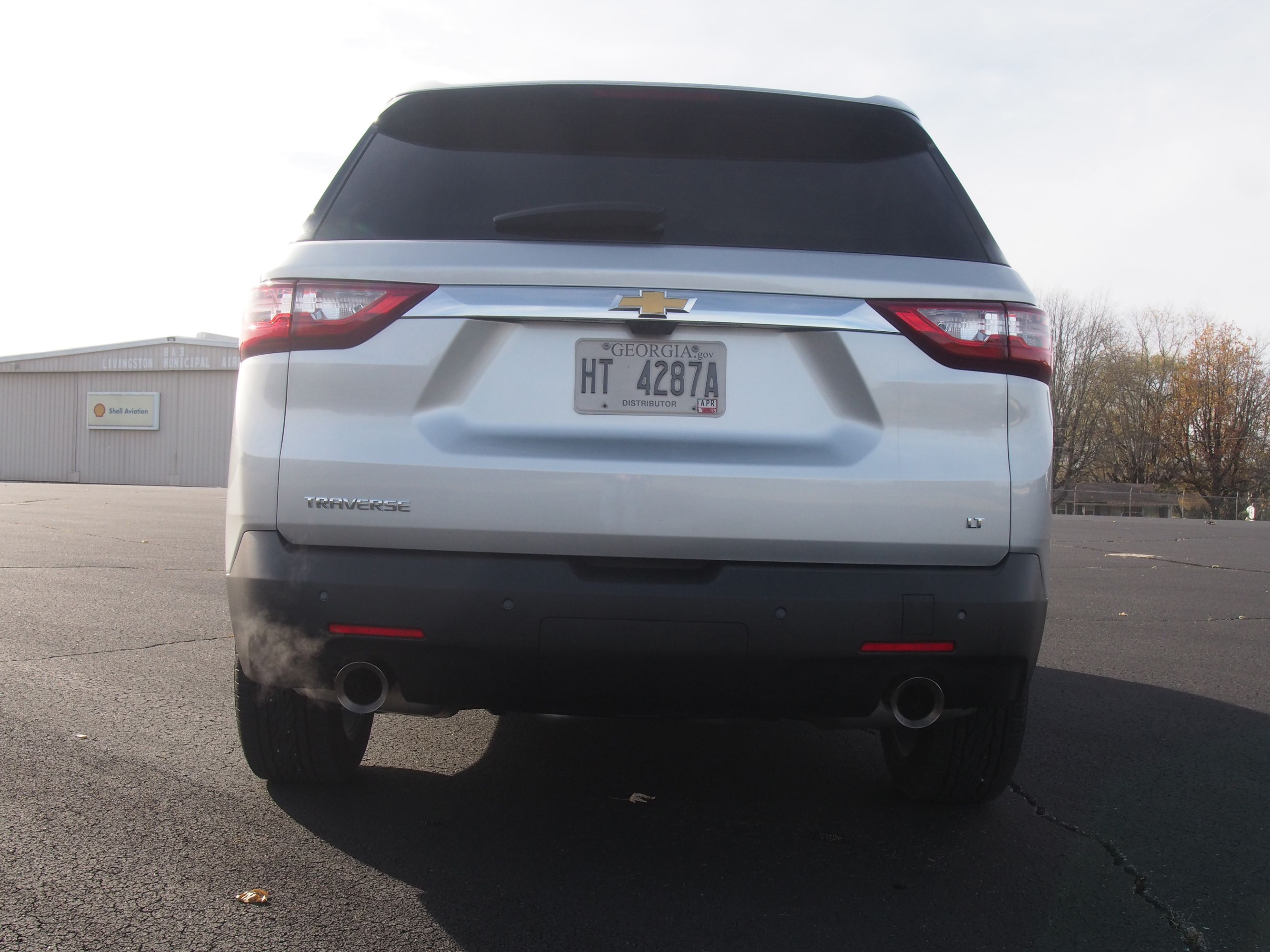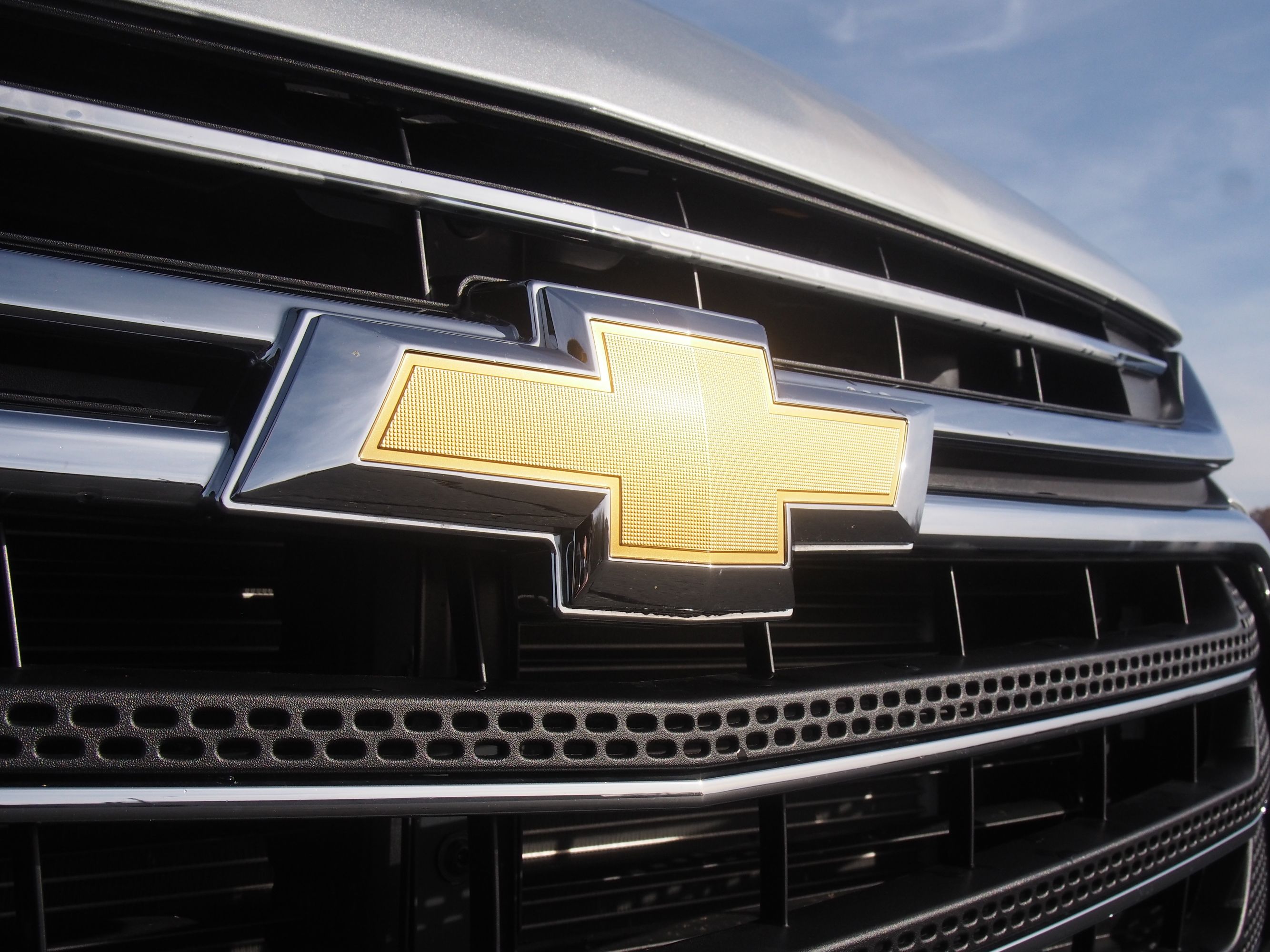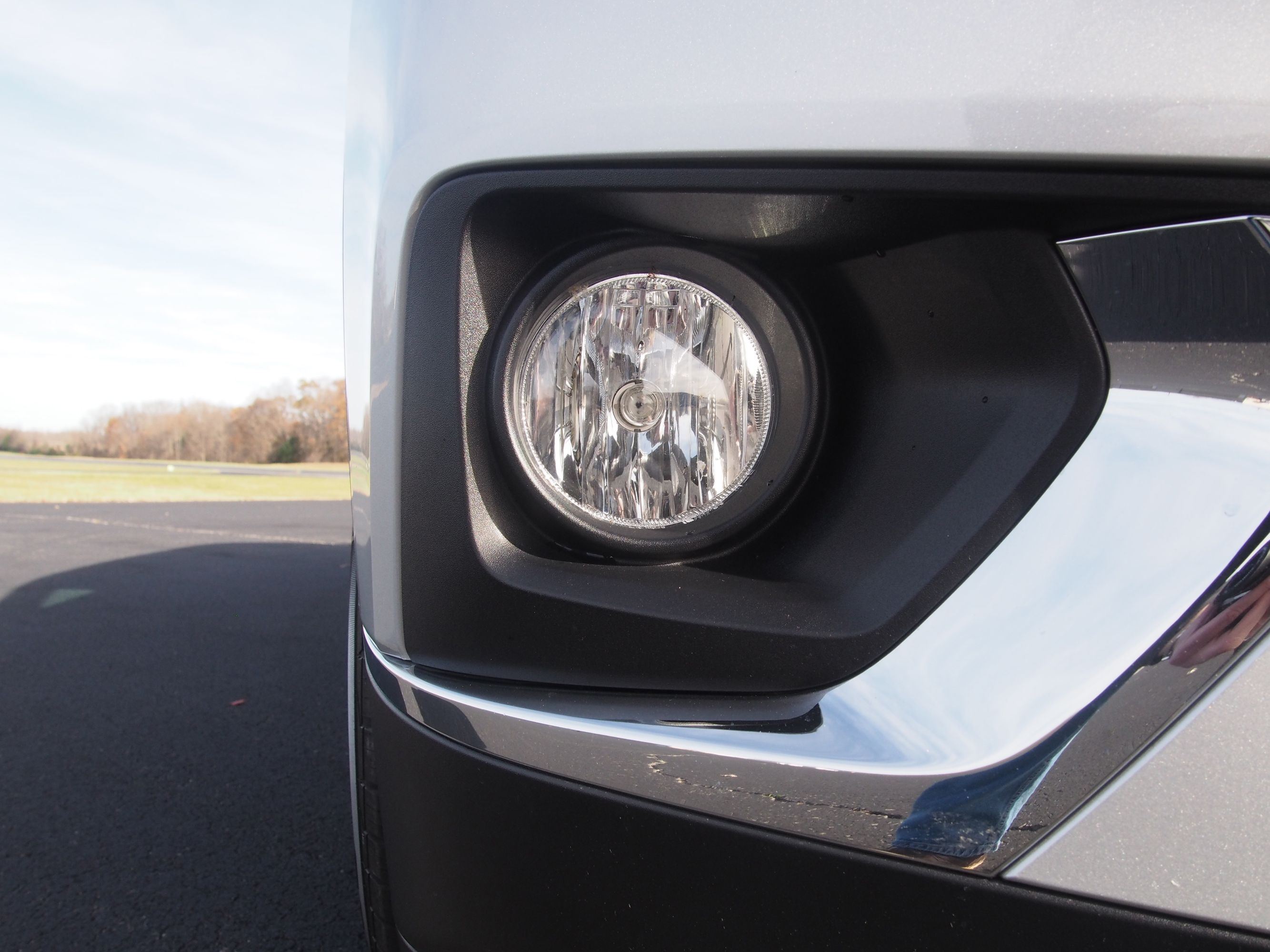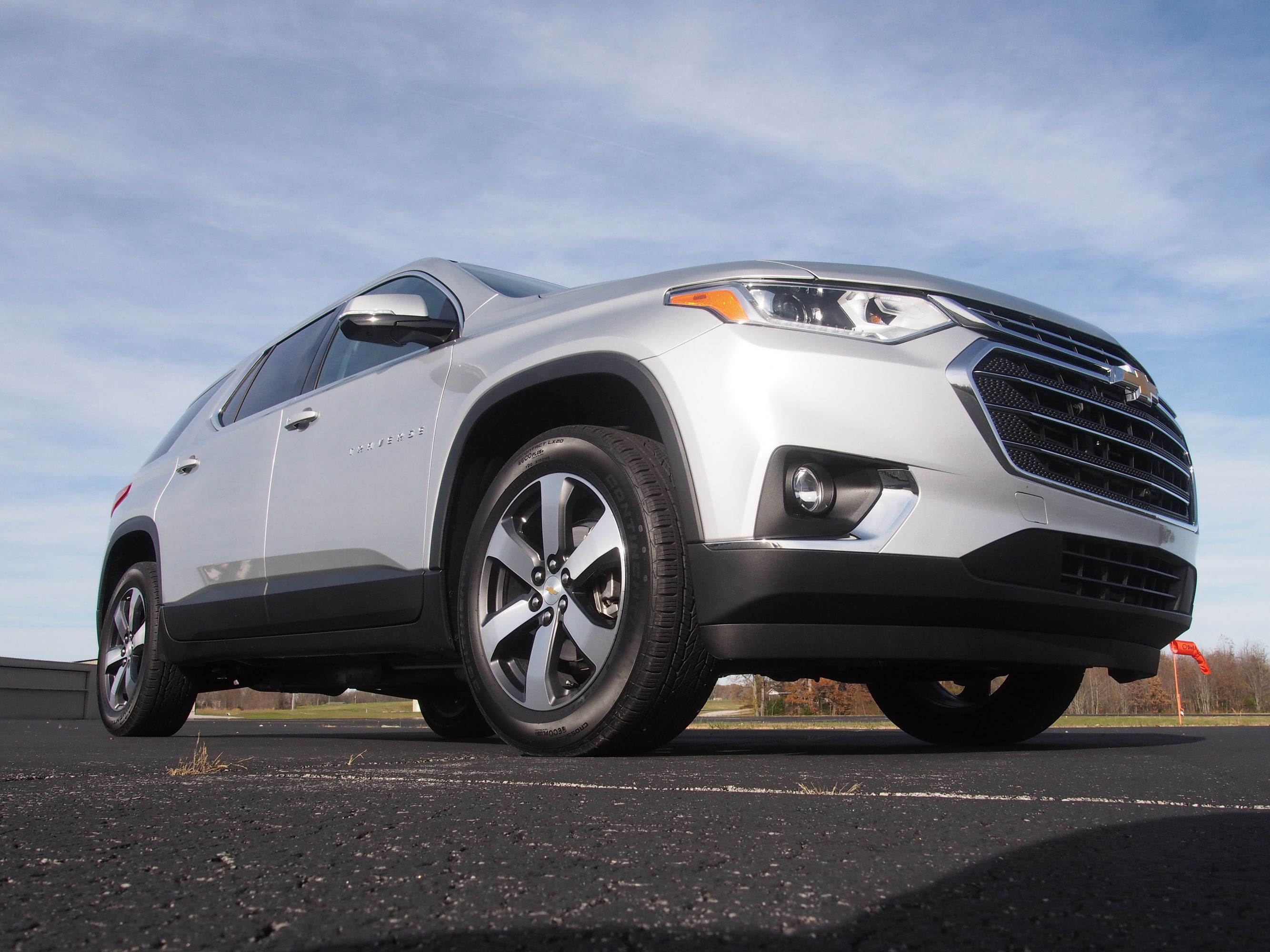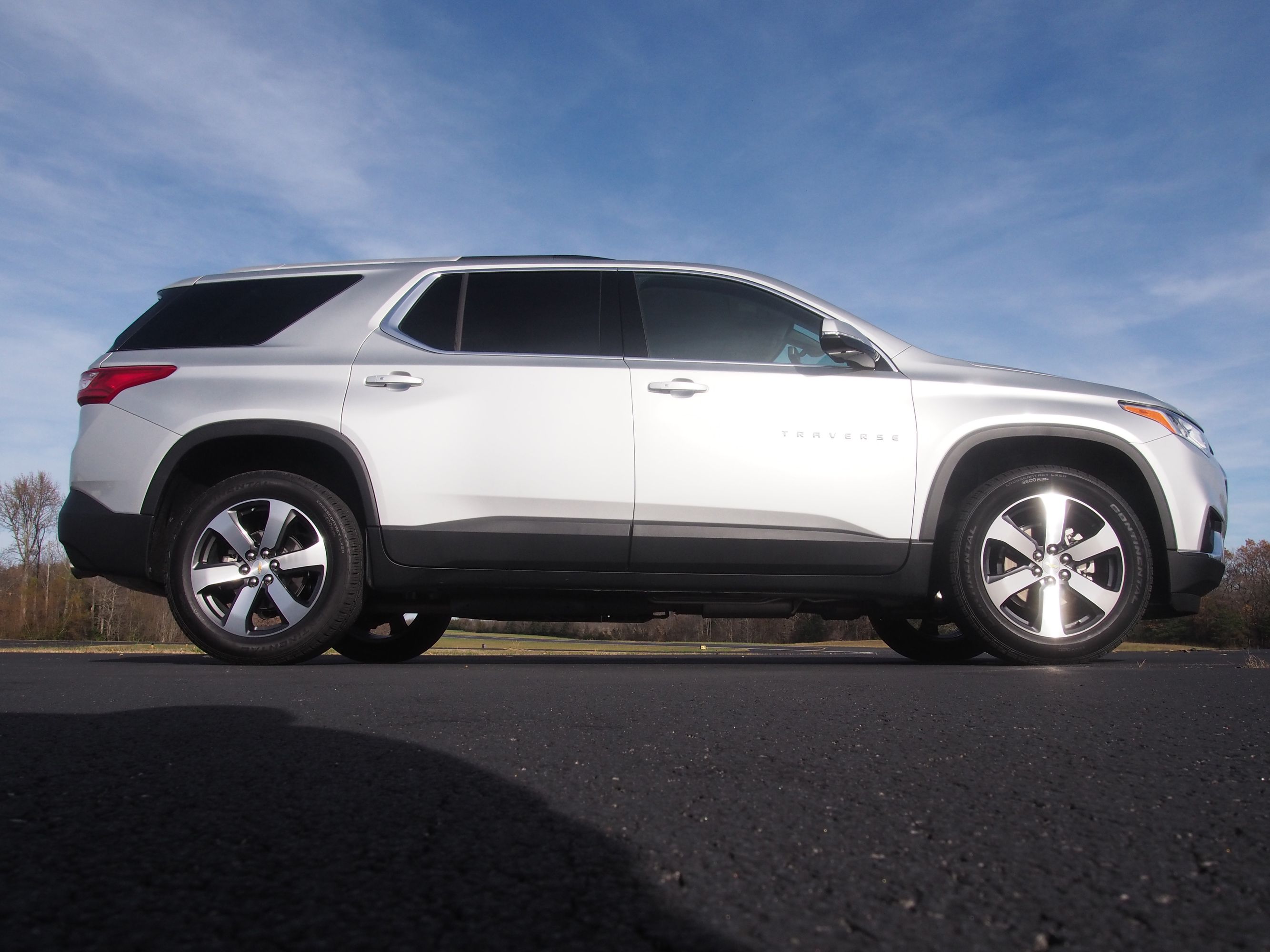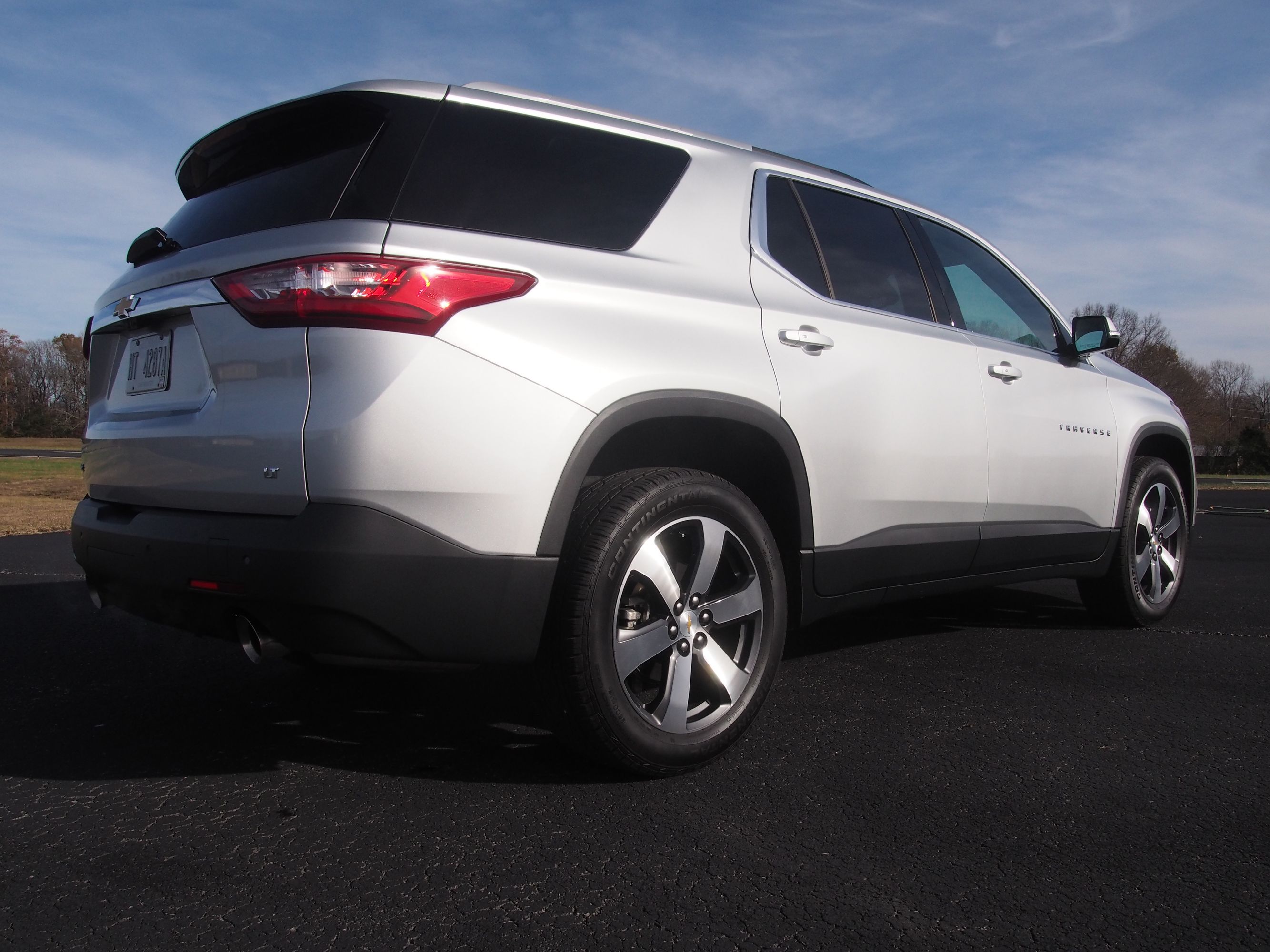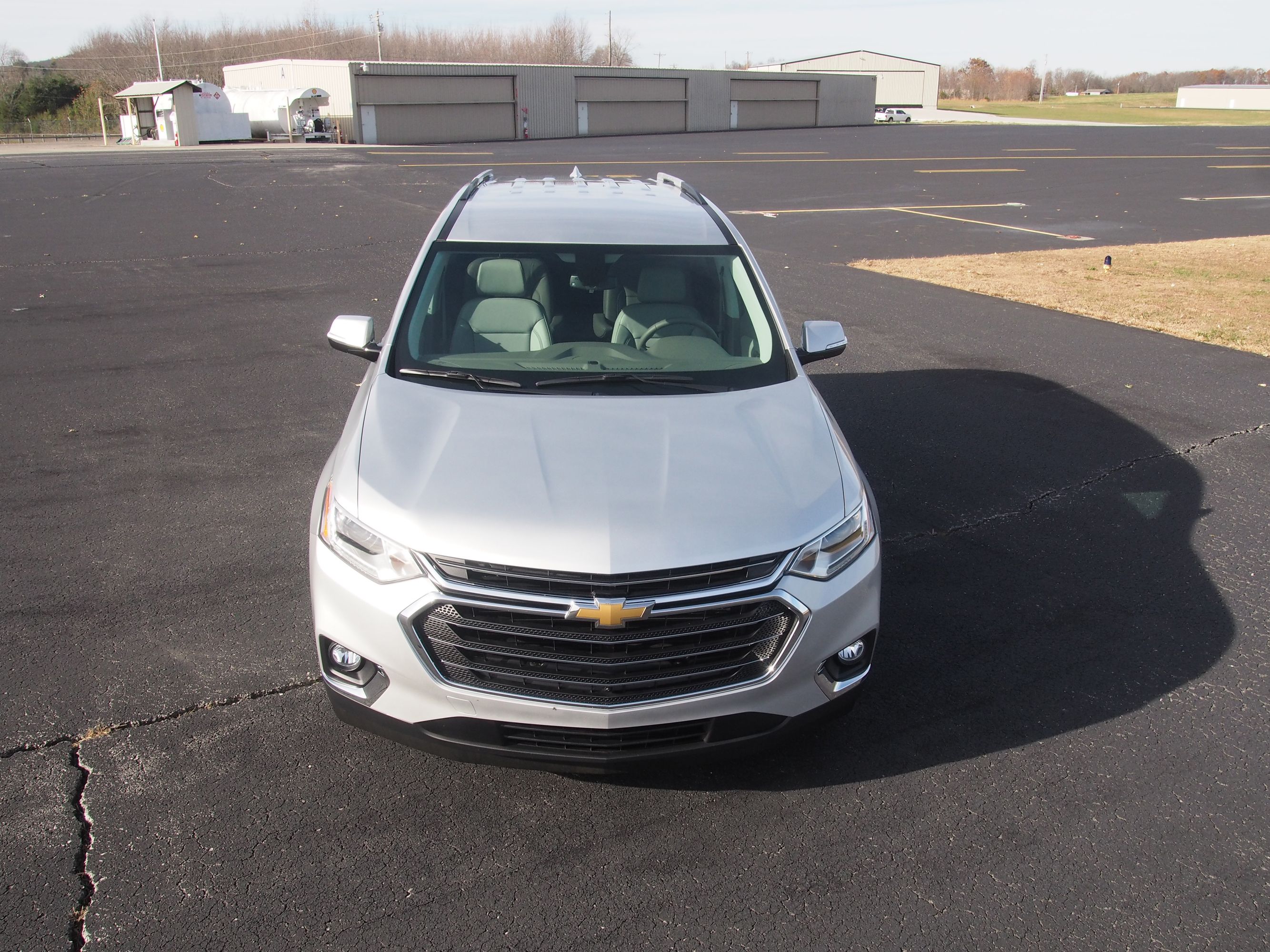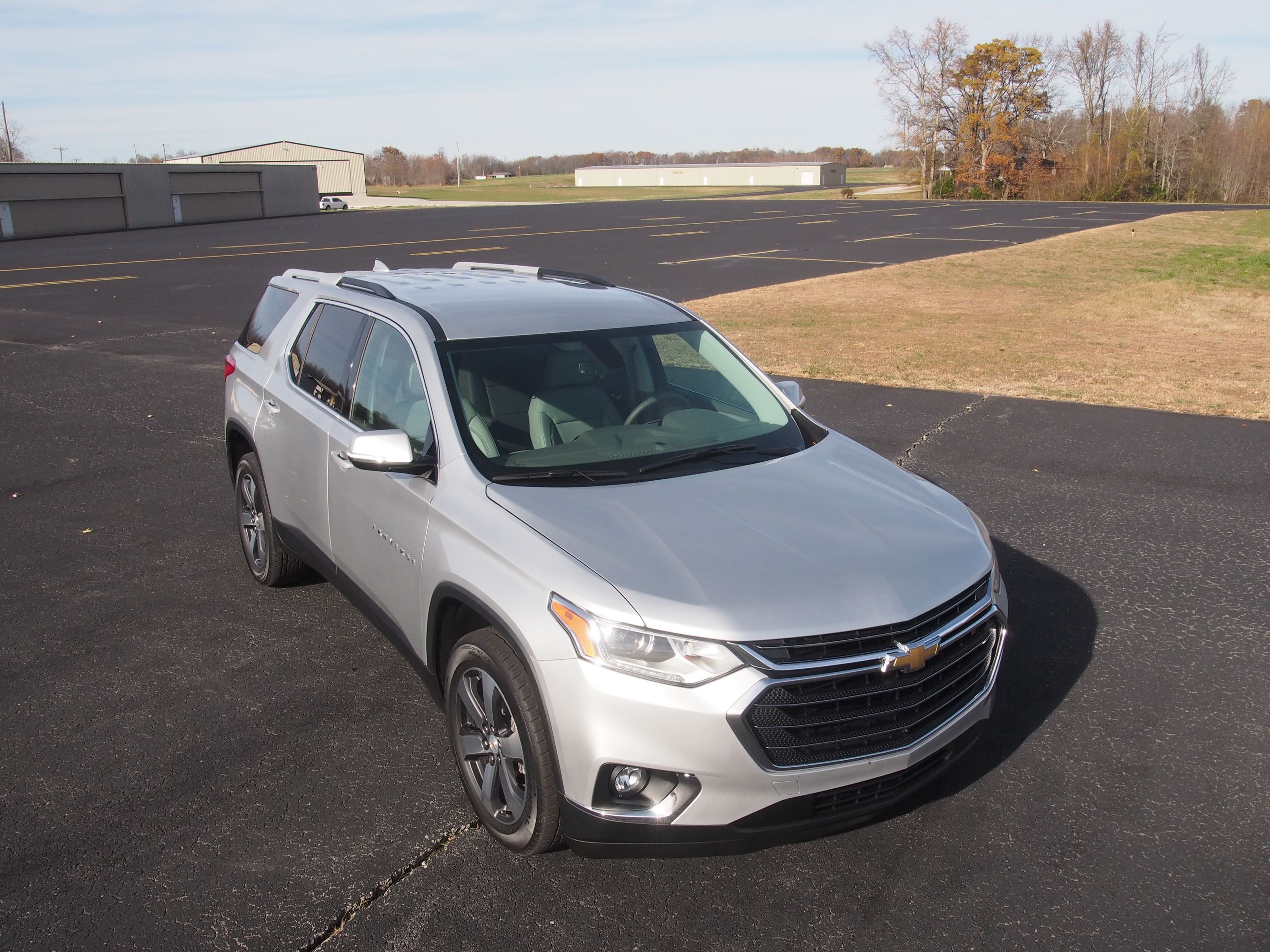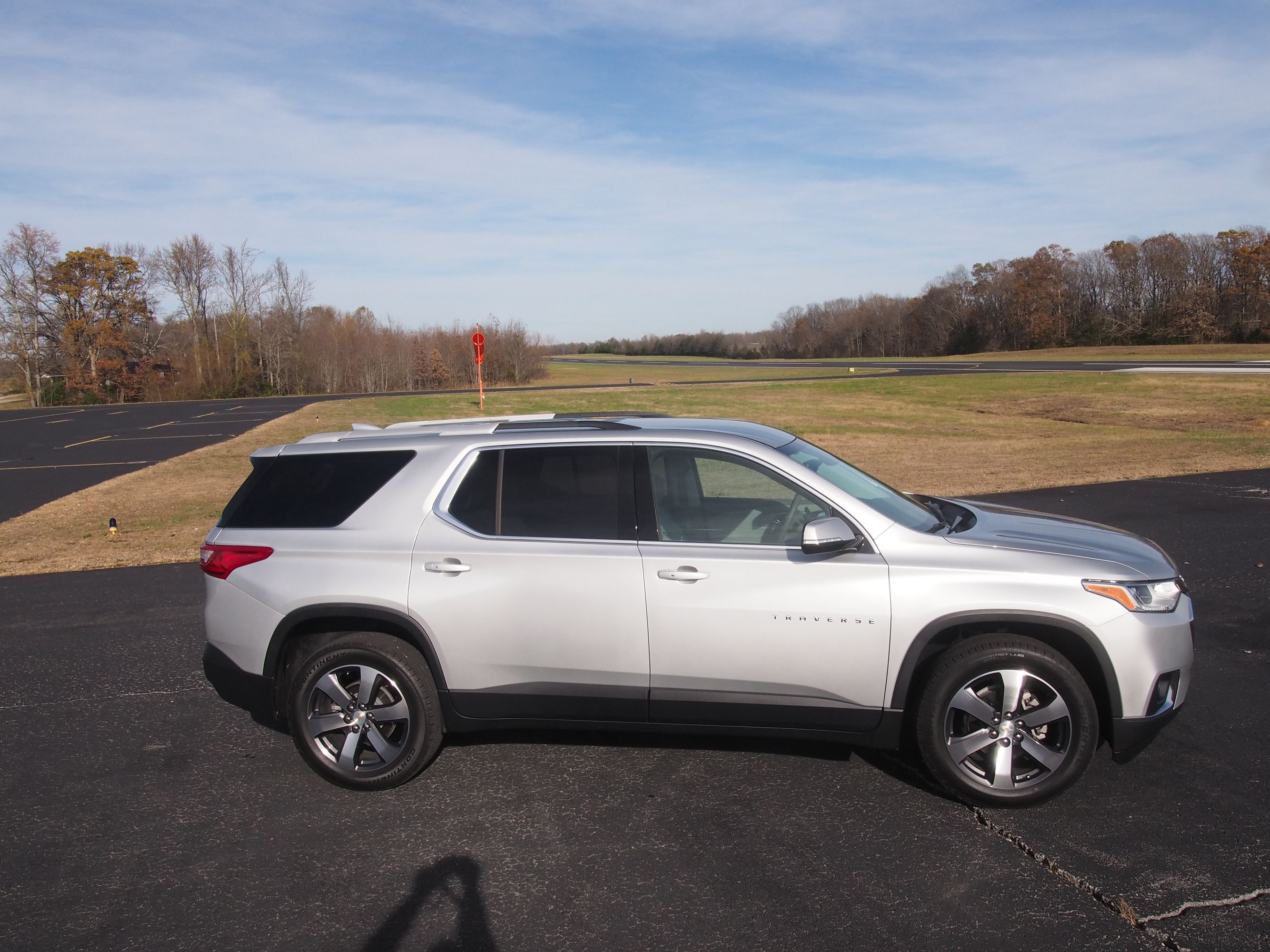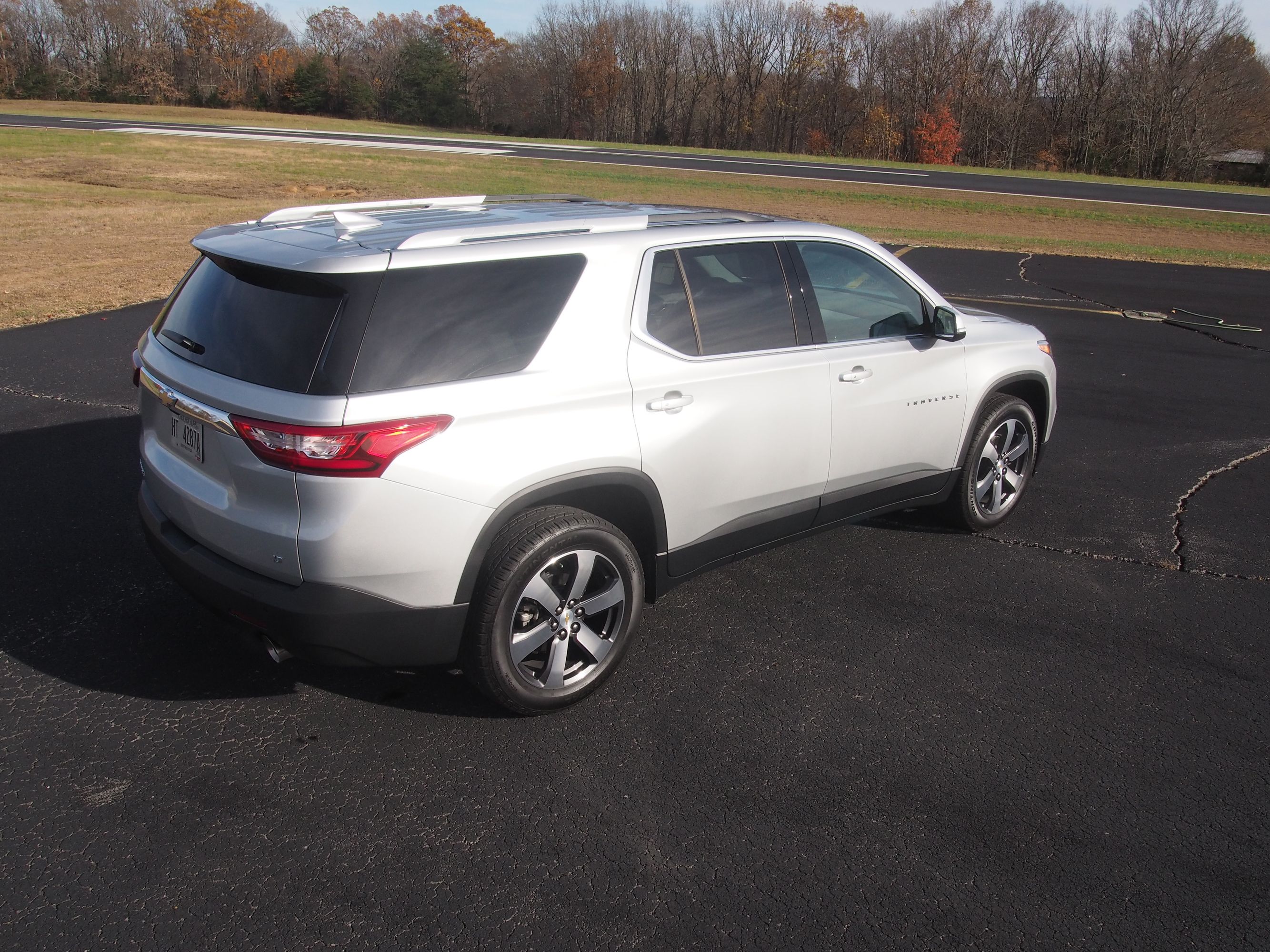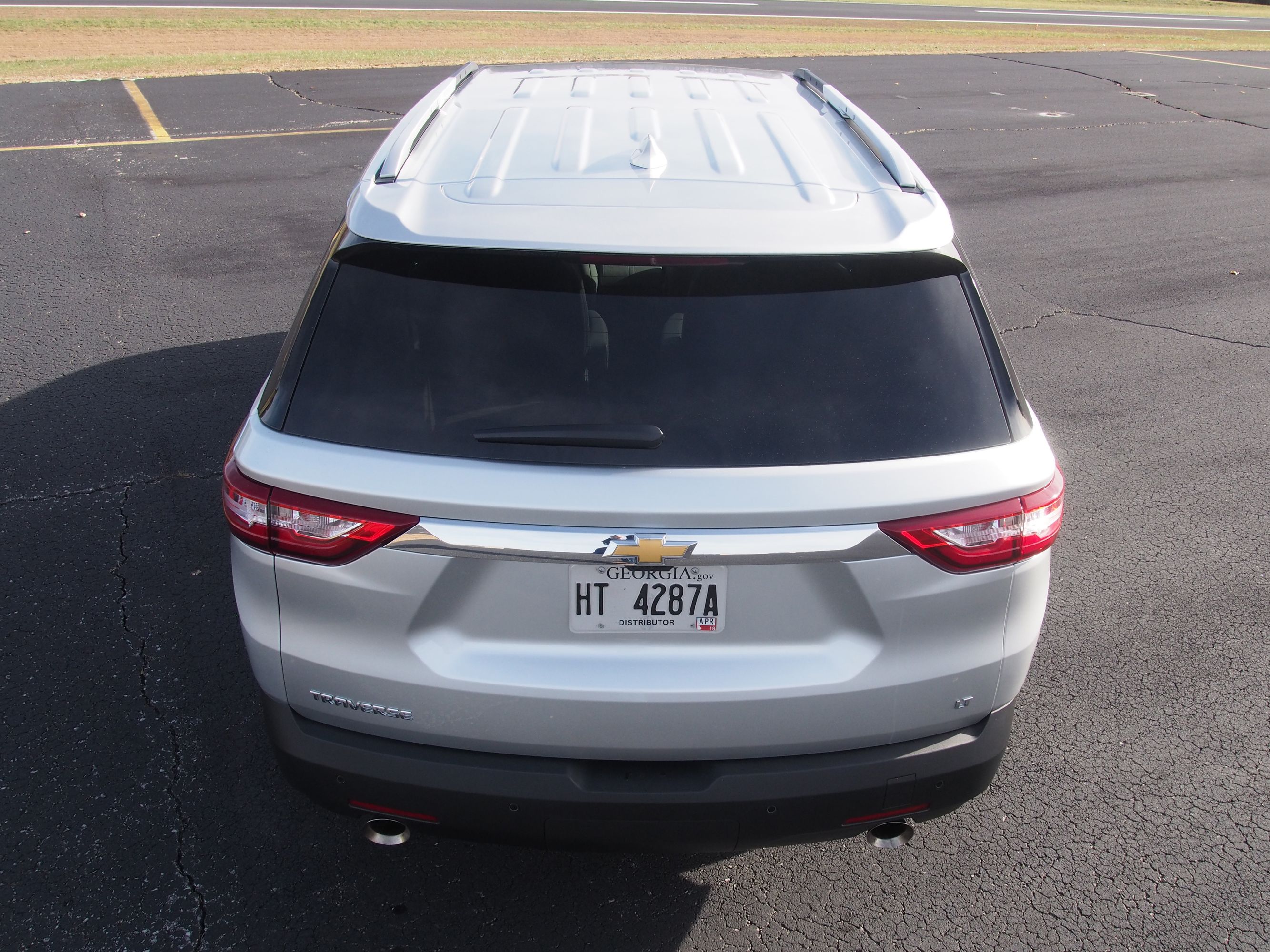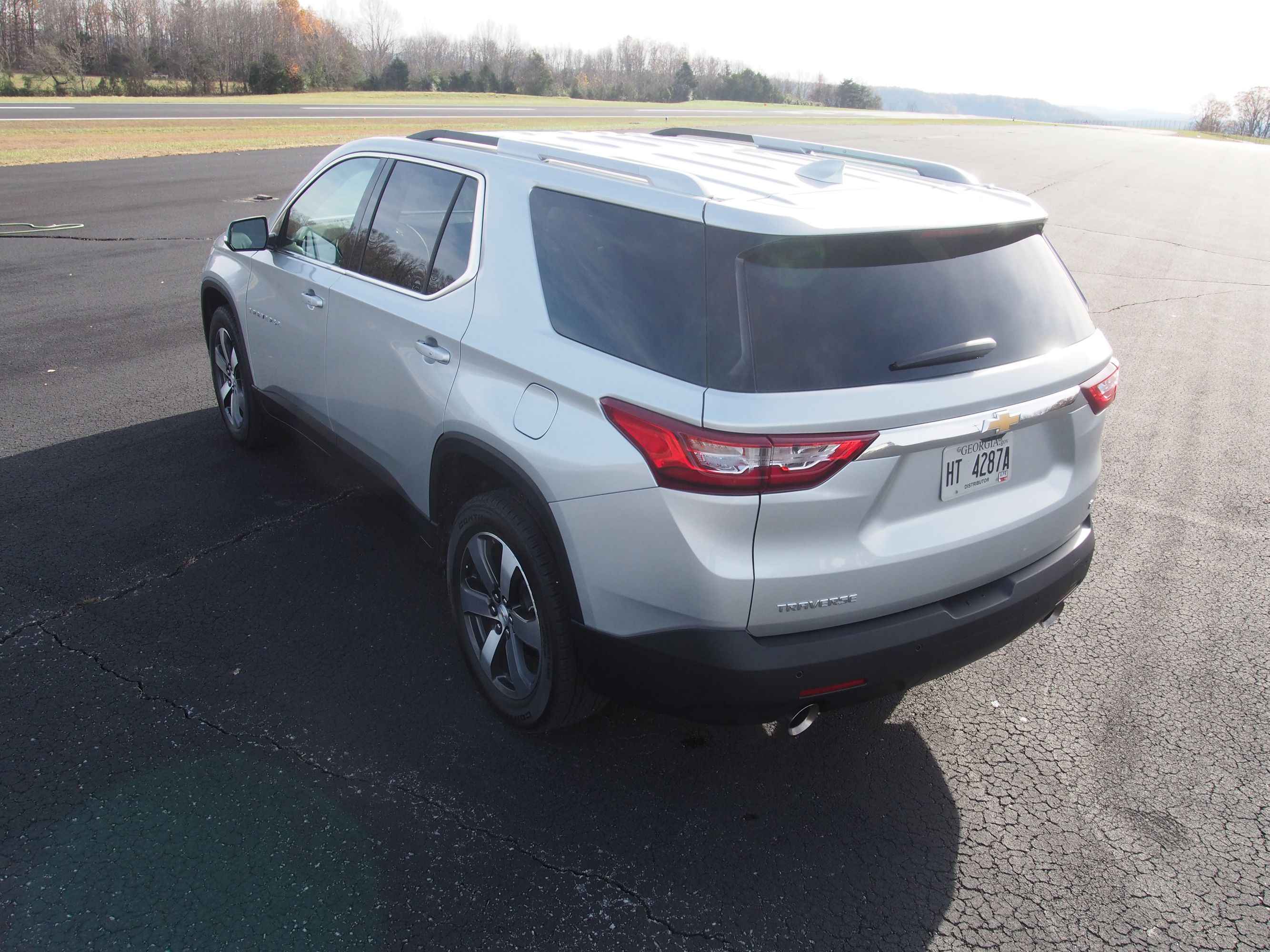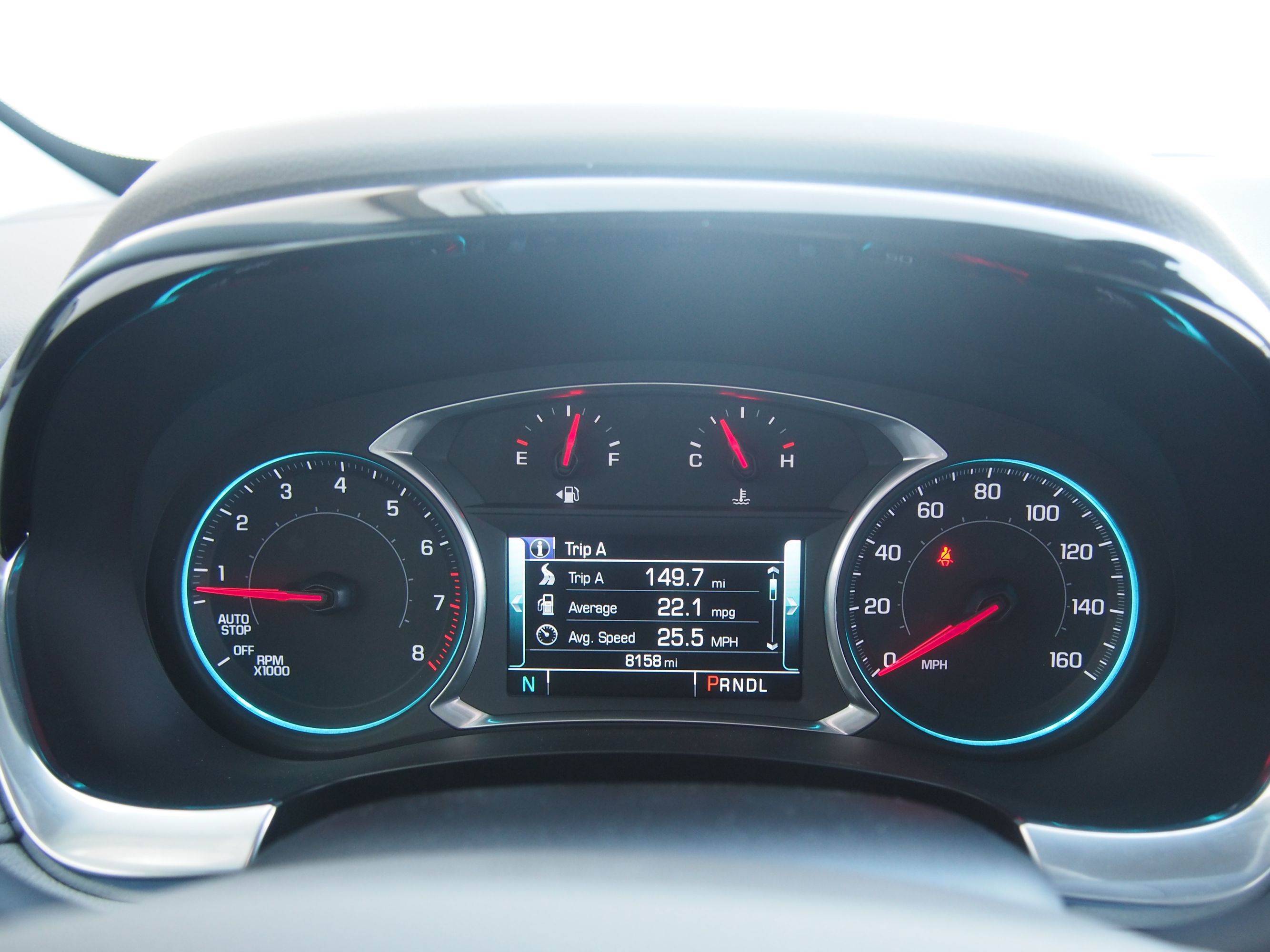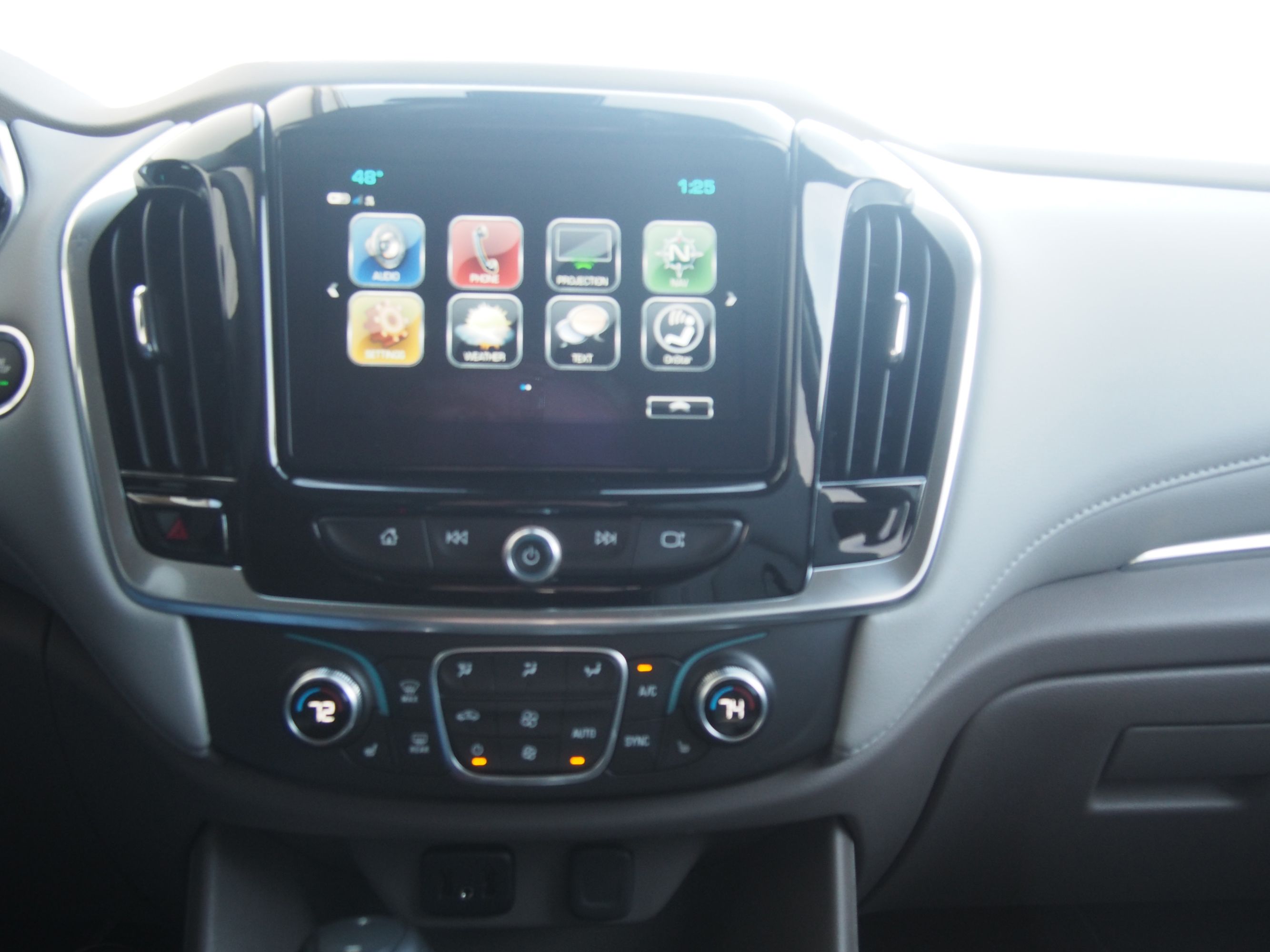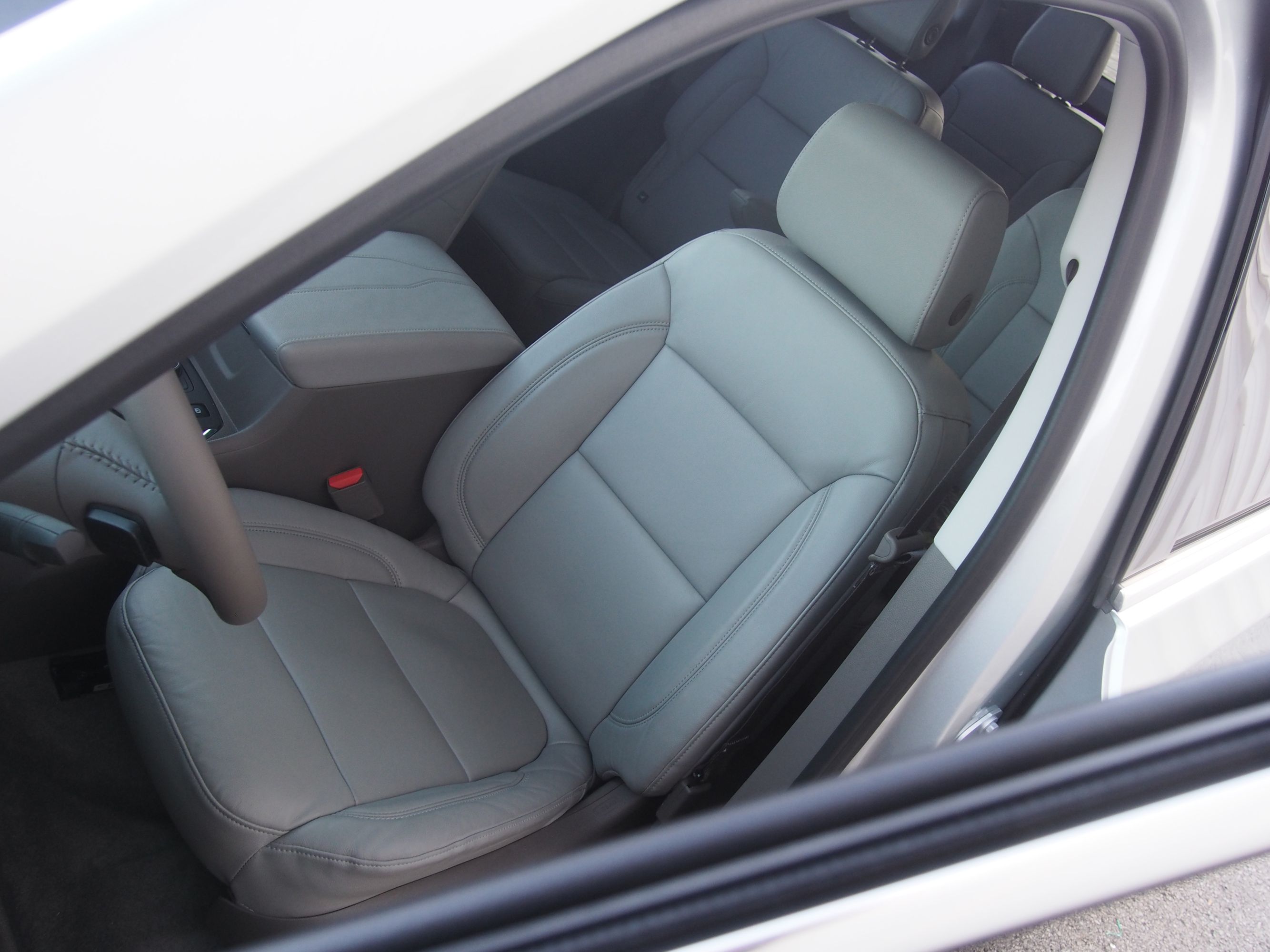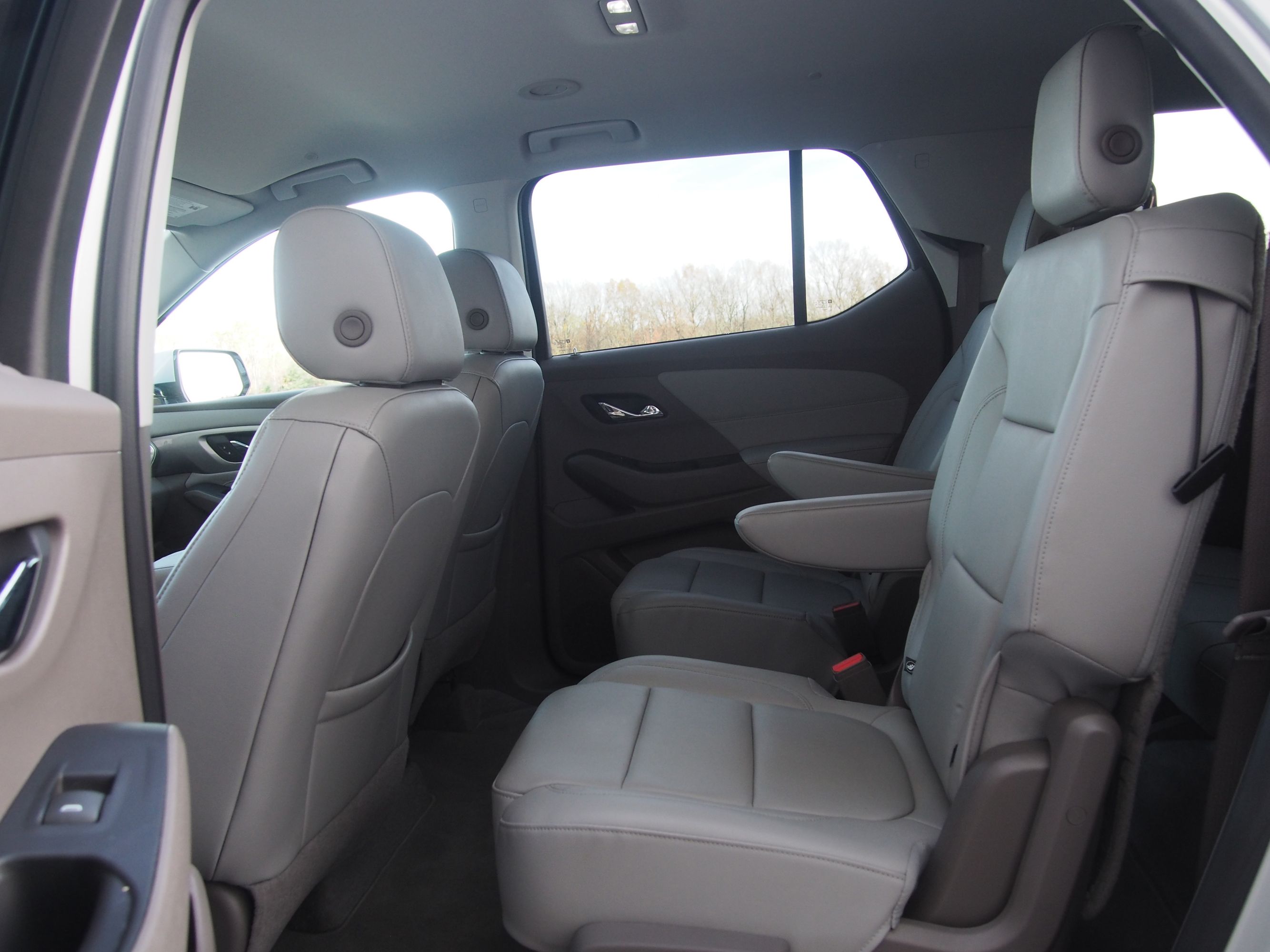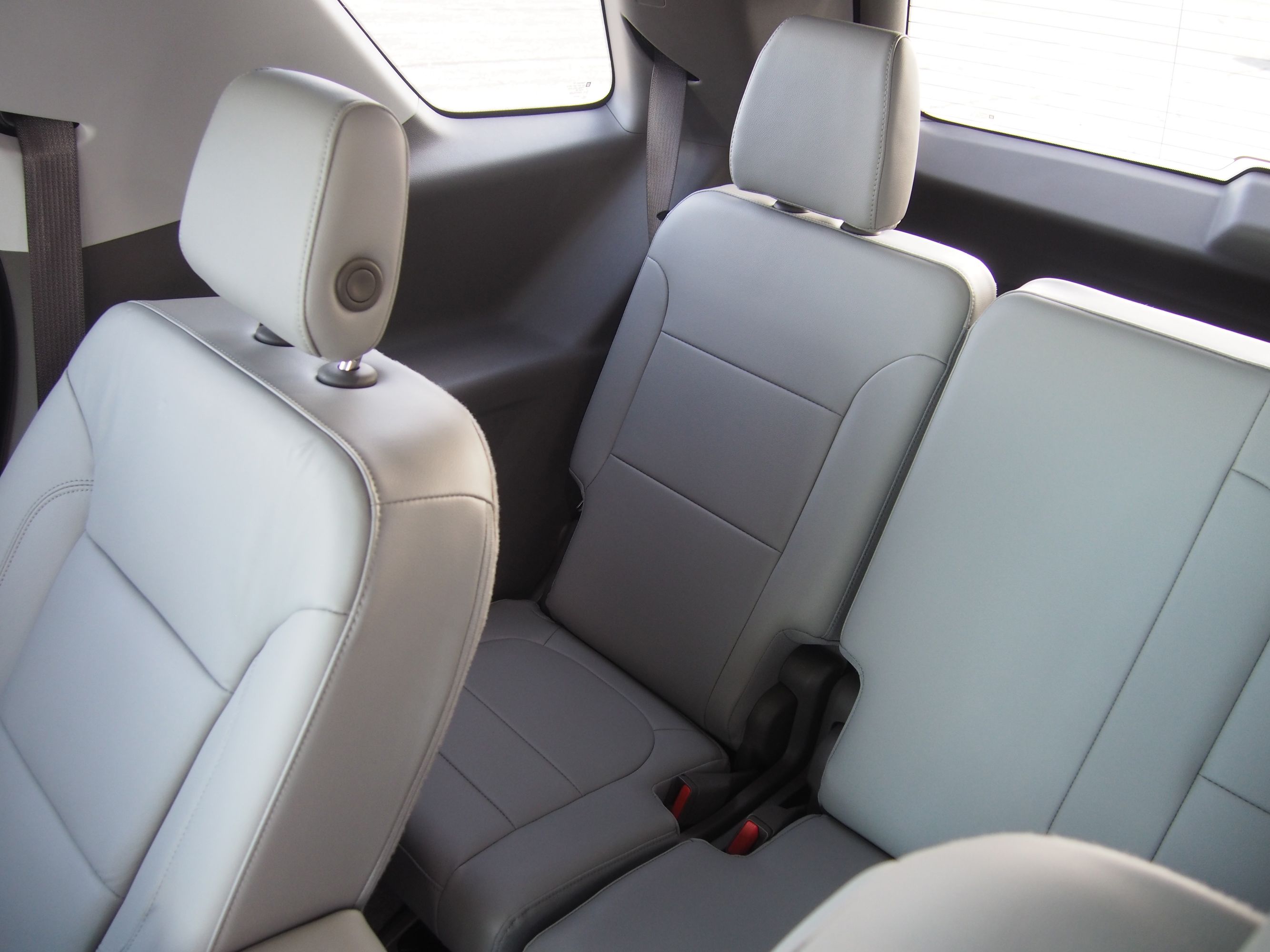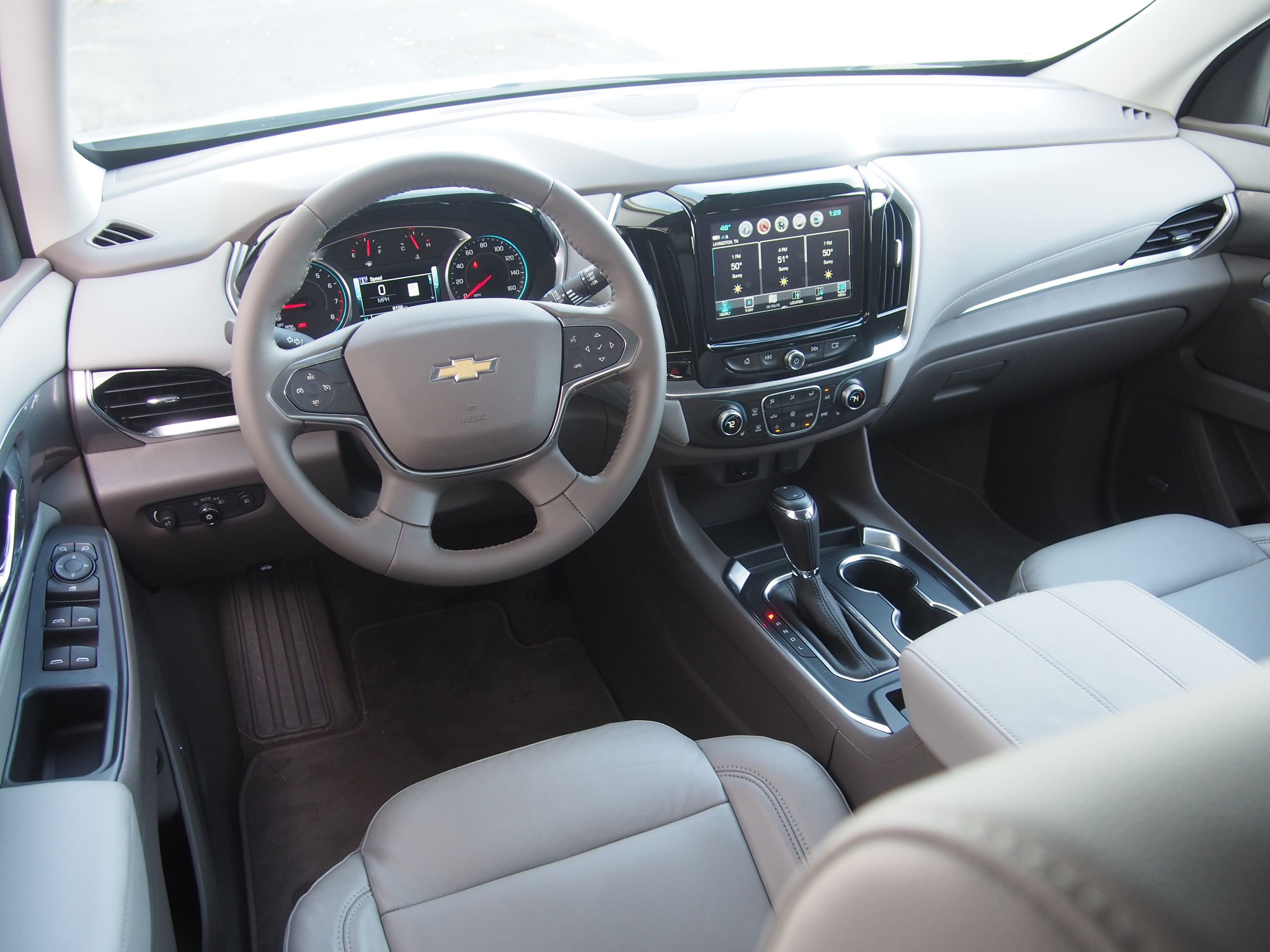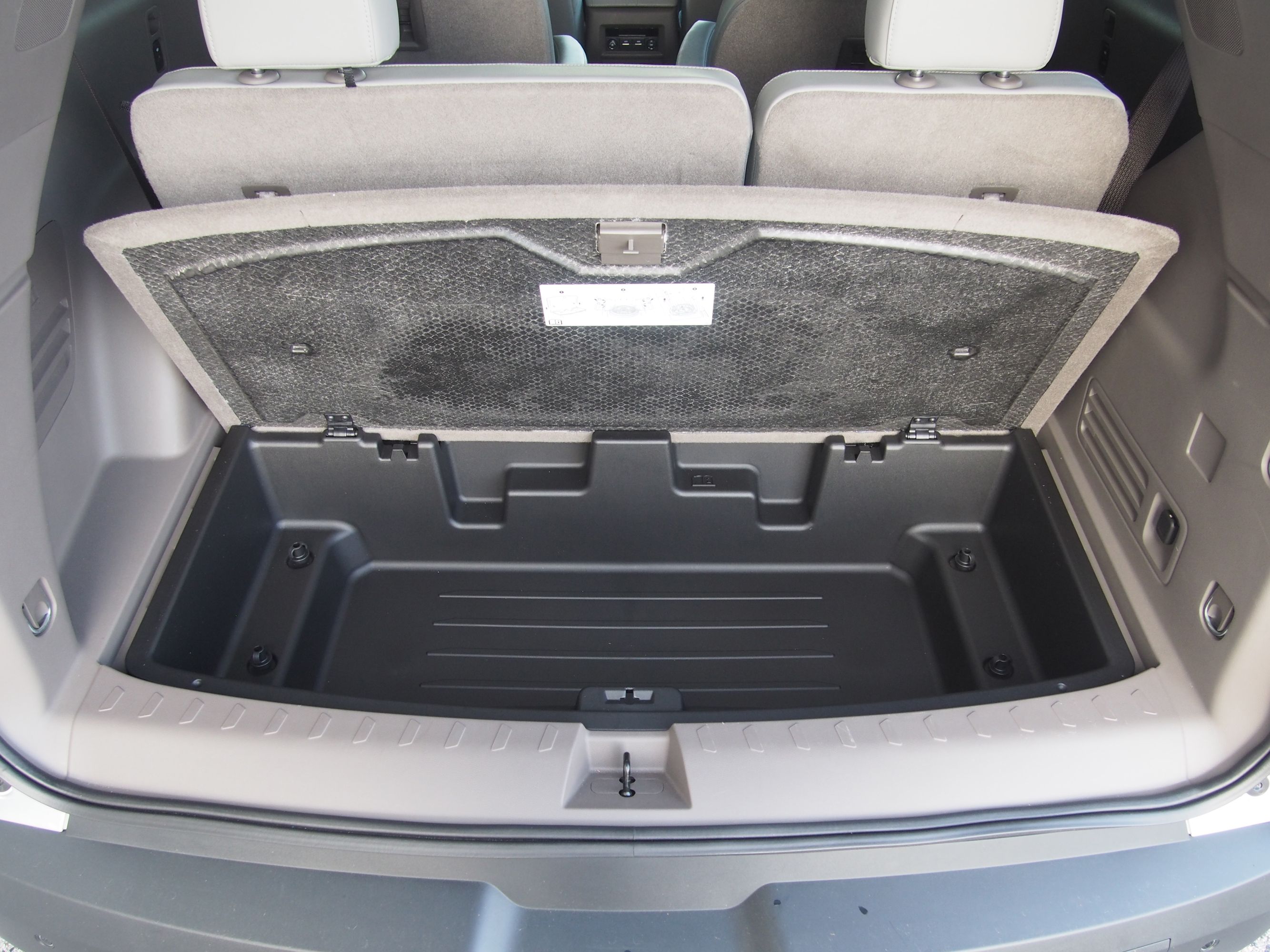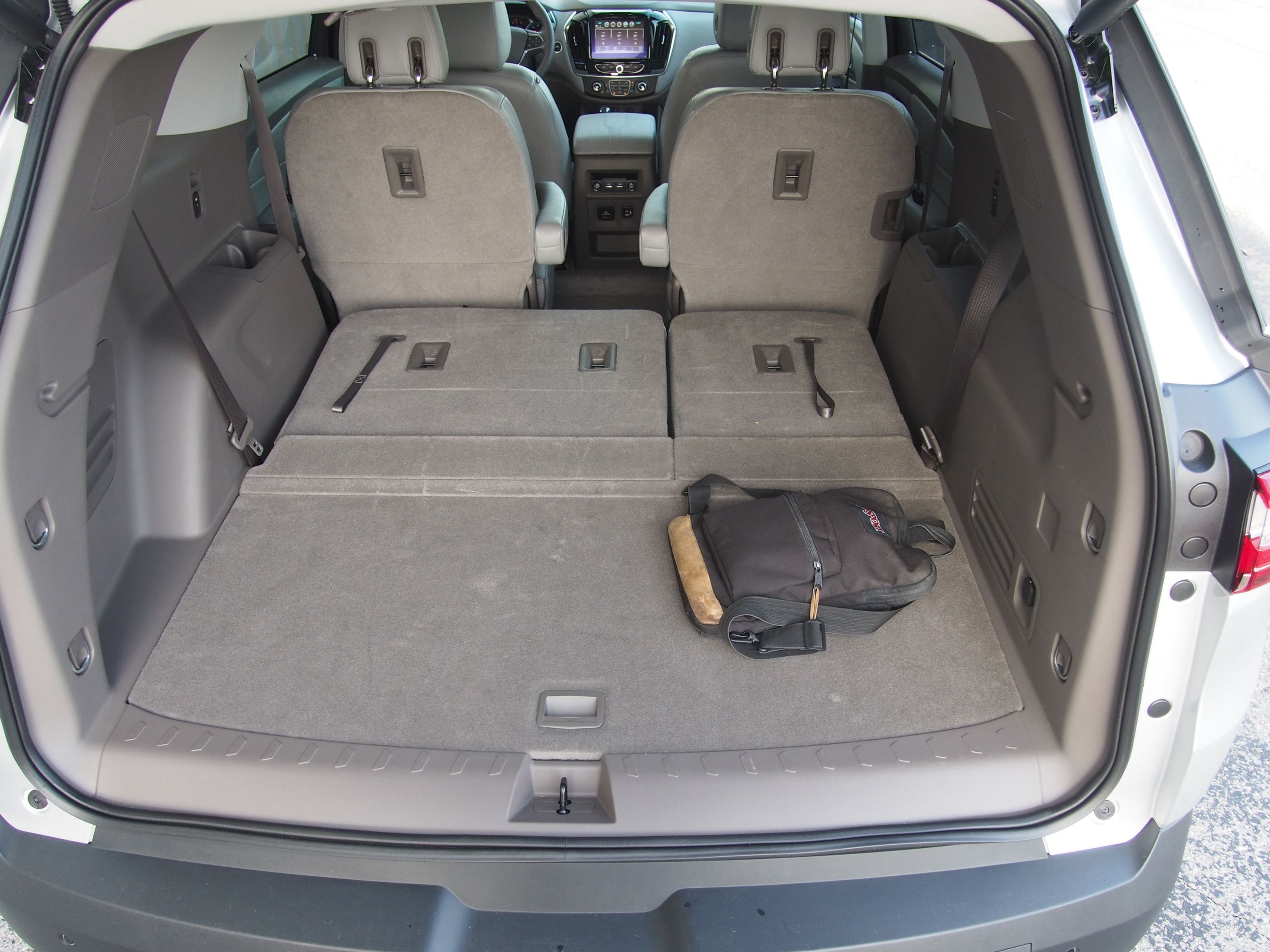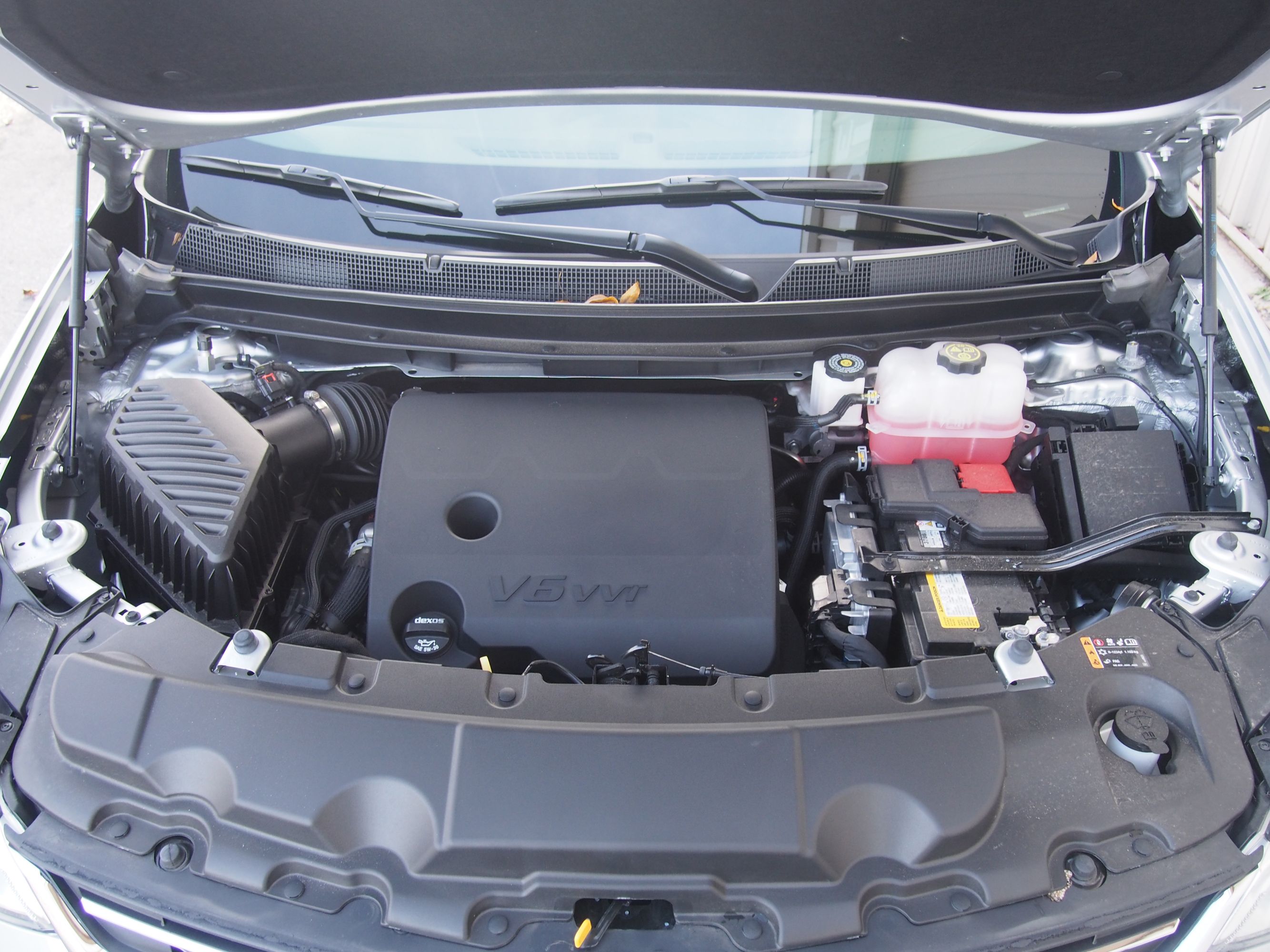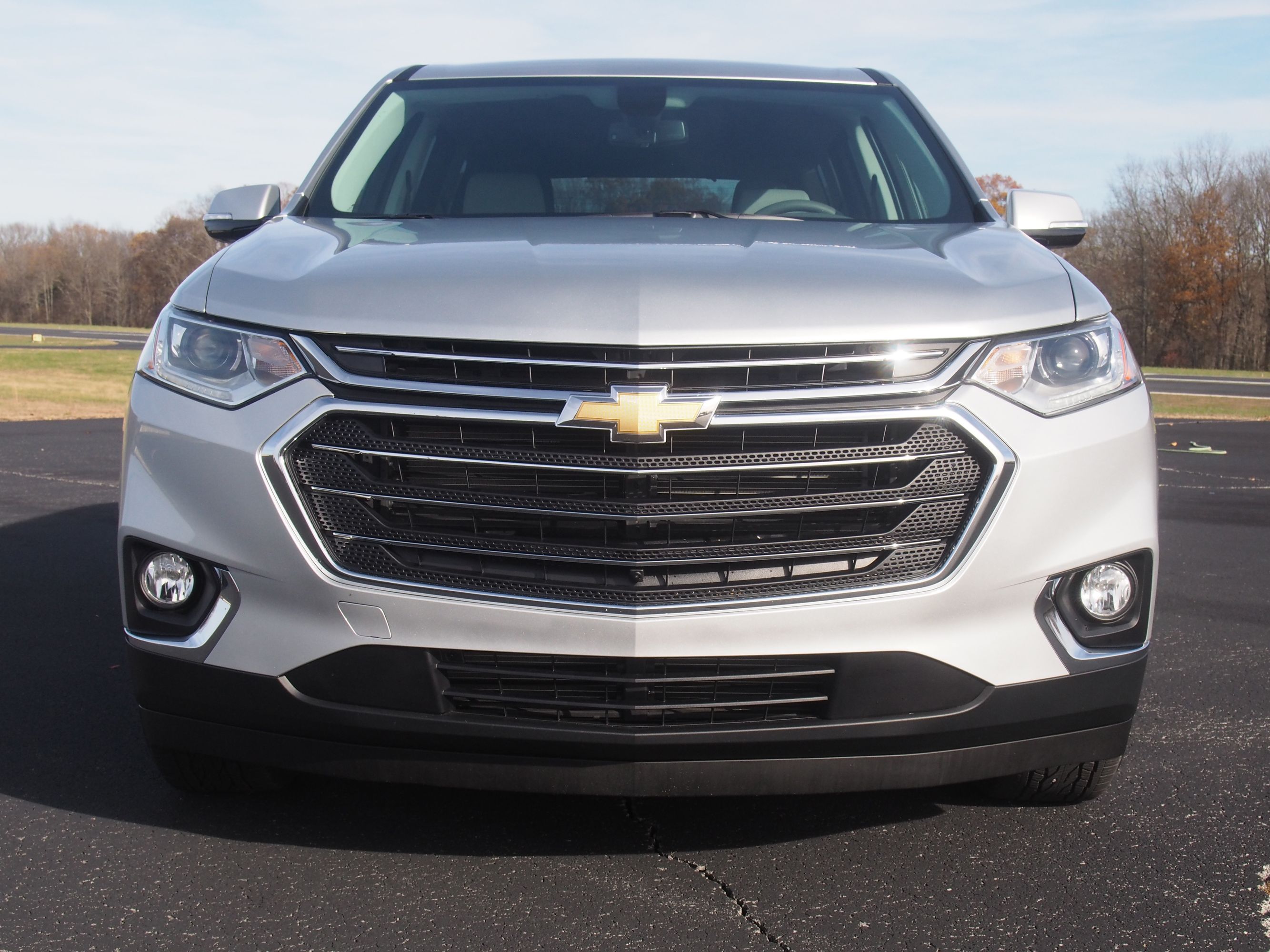The Chevrolet Traverse is all-new for 2018, and it’s a big improvement over its predecessor.
It sports an all-new design inside and out, and it offers more space for up to eight passengers and their stuff. Going nose-to-nose with the new VW Atlas and other midsize, three-row crossovers, it makes a pretty solid case for itself.
That was the main impression the new Chevrolet Traverse gave me during a week-long test drive. Is this the right crossover for your family? Read on.
2018 Chevrolet Traverse - Driven
- Make: Array
- Model: 2018 Chevrolet Traverse - Driven
- Engine/Motor: V6
- Horsepower: 310 @ 6800
- Torque: 266 @ 2800
- [do not use] Vehicle Model: Array
Design Notes
The design of the 2018 Chevrolet Traverse is a big improvement over the previous generation of the big crossover, in my opinion.
Its face wears the newest iteration of the dual-shield Chevrolet corporate grille and features wide, trapezoidal headlight lenses. My tester had fog lights cleanly integrated into nacelles on the lower bumper area. A familial crease runs from the bottom of the Traverse’s chin to the hood, equally bisecting the golden Chevy Bowtie. This design element is shared throughout the Chevy family, from the tiny Spark hatchback to the biggest Silverado HD pickup truck.
From the side view, one might be forgiven for mistaking the new Traverse for a late-model Ford Explorer. The head and taillights sweep onto the side design, and a sharp crease connects them through the doors. A forward-leaning C pillar separates the rear passenger door glass from the cargo area/third row side glass. These are all strong design elements, but the Explorer was there first.
Chevy says the Traverse was redesigned so that its profile looked more like its truck-based family members, the Tahoe and Suburban. True enough, there is some family resemblance. Some people even said, unprompted by yours truly, that they saw some Tahoe in this redesign. But the side view is one area where, for better or worse, the previous generation of the Traverse was more unique. The new design looks less feminine to my eye, but also less identifiable as a Traverse.
From the rear, the hatch glass appears to wrap around the D pillar thanks to some blackout trim. It’s a good design trick. The hatch looks more upright than the previous Traverse, which results in decent cargo volume behind the third-row (23 cubic feet). Fold down the third-row seats, and there’s a plentiful 58.1 cubic feet to haul things. There’s 98.2 cubic feet if you fold the second-row captain’s chairs. That’s not quite minivan-sized cargo capacity, but it’s close.
Legroom for front occupants is 41 inches. Second-row riders get 39 inches, and third-row passengers get 33.5 inches. The second row slides forward, so there’s the ability to divvy up legroom if needed. And the second-row seats slide and tilt forward with ease to allow access to that third row.
The interior design of the Traverse isn’t just practical, it’s attractive. This may be the biggest improvement the new Traverse makes over its previous generation. The two-tone dashboard in my Traverse 3LT was a clean, futuristic design with lots of soft-touch surfaces.
Its centerpiece was the eight-inch Chevrolet MyLink touchscreen infotainment system featuring navigation, Apple CarPlay/Android Auto connectivity, and 4G LTE wifi. The system’s design was easy to master and easy to use while driving, thanks to big on-screen buttons combined with simple steering wheel controls and voice commands. I still give Chrysler Uconnect a slight edge in ease-of-use, but Chevrolet MyLink is catching up to it quickly.
Seats were comfortable in the first and second rows for me. At 6’3”, I was pretty cramped in the third-row bench, which sat a little too low for comfort even when I moved the second-row seats forward a couple of inches to make room for my knees. For young children, the third row should be fine.
Drive Notes
Chevrolet has done a lot of work to the chassis of its vehicles in recent years, and this latest update of the Traverse is no exception.
The 2018 Traverse felt tight at first blush. Doors closed with the solid feel of a bank vault. Steering feel was light, but positive -- it’s not a sports car, but it’s not totally devoid of road feedback or turn-in heft like some midsize crossovers (here’s looking at you, Nissan Pathfinder.) It’s big, and parking takes some judgment. I was thankful for parking sensors and an excellent reversing camera.
The engine, a newly massaged version of the ubiquitous 3.6-liter direct-injection gasoline V6 found in lots of GM vehicles, made a stout 310 horsepower at 6,800 RPM and 266 lb-ft of torque at 2,800 RPM. That was plenty to get me up to speed when merging onto the highway or taking off from a traffic light, despite the 4,300-lb curb weight of the Traverse. Hat-tip to the nine-speed automatic transmission for shuffling quickly and smoothly through the gears to keep that engine in its powerband when asked.
Like many GM vehicles of recent years, the 2018 Chevrolet Traverse has quietness down to a science. Its interior remained whisper-quiet at highway speed or when driving over rough pavement. That V6 engine did not make itself known unless I gave a hearty shove to the throttle pedal. The lone exception was at startup, when I thought the engine sounded a bit coarse until settling into its idle.
The Bose 10-speaker premium sound system also helped bring serenity to the cabin of the 2018 Traverse I tested, even if I wasn’t a fan of its rudimentary two-band equalizer buried in the MyLink settings.
If you’re so inclined, the V6 enables you to tow up to 5,000 lbs, Chevrolet says. That’s pretty impressive for a front-wheel drive crossover that doesn’t have a truck frame underneath its body. It should be plenty enough to tow your personal watercraft or ATV, at any rate.
I was seriously impressed with the fuel economy of my tester. Despite a lot of in-town driving with a heavy foot, the Traverse returned a trip computer-reported 24 MPG until photo day at the end of my test week, when I spent a lot of time idling while I shot photos of the vehicle. After that, it dipped to 21 MPG.
EPA rates the V6 front-wheel drive Traverse at 18 MPG city, 27 MPG highway, 21 MPG combined, so I ended the week right where those numbers said I should. But I’m curious how the big, relaxed V6 would perform on a long highway trip with the cruise control set. Getting 27 MPG would be exceptional for something this large and capable.
Overall, if I needed a family hauler, and if I wanted to be able to tow, the 2018 Chevrolet Traverse would make a pretty strong play for my money.
Competitors
Nissan Pathfinder
The Nissan Pathfinder comes across just slightly softer and smoother than the Traverse, which may be a good thing or a bad thing, depending on your preferences.
Its 3.5-liter V6 is not quite as powerful as Chevrolet’s, making 284 horsepower compared to the Chevy’s 310. But it’s very close in torque, making 259 ft-lbs compared to the Chevy’s 266. Where the Traverse has a distinct advantage is in how early its torque comes on. With the Traverse, you hit the torque peak at just 2,800 RPM. With the Pathfinder, you’ve got to go all the way to 4,400 RPM to hit that peak.
Another distinct advantage for the Traverse is its traditional multispeed automatic transmission. All iterations of the Pathfinder get a CVT, or continuously variable transmission. Many drivers dislike the feel of these transmissions, which some describe as a “rubber band” feeling when accelerating. Nissan has tried to address this concern by programming fake “shift points” into its CVT algorithm that become noticeable when the driver boots the throttle.
Overall, the CVT is part of the reason the Pathfinder is able to feel smoother than the Traverse, particularly around town. But when driven in anger or when towing, the Nissan -- though rated to tow more than the Traverse, at 6,000 lbs -- will feel less satisfying.
The Pathfinder has a slight edge on the Traverse in interior passenger space, though. To its credit, the Chevy can carry up to eight passengers, while the Nissan can hold only seven. But there’s more legroom for front and second-row occupants in the Pathfinder, at the expense of third-row legroom that falls short of the Traverse (30.7 inches vs. 33.5.) Most people who buy three-row midsize crossovers like these are only using the third row in rare instances, so I give the Pathfinder points for giving the front two rows more space and comfort.
Cargo space tilts in favor of the Traverse, with the Pathfinder’s behind-the-third-row space coming in at just 16.2 cubic feet compared to the Chevy’s 23 cubic feet. Fold the third seat, and the advantage widens for the Traverse (47.4 cubic feet vs. 58.1.) All seats folded, the Traverse has a cavernous 98.2 cubic feet of cargo volume compared to the Pathfinder’s 79.5.
Both Chevy and Nissan are known to discount heavily, particularly late in the model year. For folks who don’t need maximum cargo or third-row space, that may be the deciding factor.
Read our full review on the 2017 Nissan Pathfinder
GMC Acadia
Ah, the elephant in the room. The GMC Acadia is the corporate sibling to the Chevrolet Traverse, and it was born first, coming out a model year earlier than the Bowtie-wearing midsize crossover.
If I might say so, the Acadia got most of the good looks. It generated far more positive reaction from complete strangers in parking lots than the Traverse did. I found it far more handsome than the Traverse.
But the Acadia is not as roomy inside as the Traverse. Chevrolet makes a stronger play for large families there. Every Chevrolet Traverse comes with three rows. Some Acadias do not. If you never need to haul more than five people at a time, that might not be a big deal to you. But those who sometimes take over carpool duties for the kids’ soccer team will want that third-row flexibility.
Also, the Acadia probably will be more expensive than the Traverse, when equipped with similar options.
In a way, this makes me proud of General Motors: Where GMC and Chevy SUVs used to be barely distinguishable from one another, the Acadia and Traverse are their own distinct vehicles. Sure, the infotainment systems are the same, and so is the powertrain. But the design, inside and out, is quite different between the two.
This is one of those times where you just have to decide which take you like best. I’d pick the GMC if I narrowed it down between these two, but you might prefer the design -- and slightly cheaper price -- of the Traverse.
Read our full review on the 2017 GMC Acadia.
Hyundai Santa Fe
The Korean entry in this segment has won a lot of fans in recent years. The Hyundai Santa Fe offers three rows, a quiet ride, and a decent value for families shopping the large crossover segment.
Where the Santa Fe falls short is in powertrain refinement. While its 3.3-liter direct-injection gasoline V6 is a willing dance partner, it feels a bit sluggish under the 4,000+ lbs of crossover riding on top of it. Partial blame can be laid at Hyundai’s stubborn clinging to an outdated six-speed automatic transmission.
That engine and transmission also return less fuel economy than my Traverse tester, according to EPA specs. EPA rates the Santa Fe front-wheel drive model at 18 MPG city, 25 MPG highway. While the city score matches the Traverse I drove, the highway score falls 2 MPG short. In my experience with the Santa Fe, that meant it was hard to break through the 20 MPG barrier, even though I shut down the engine while I shot photos of the Hyundai. I let the Traverse idle all through my photo shoot and still pulled down a trip computer-reported 21 MPG.
The Santa Fe is much tighter inside than the Traverse, though to be fair, its exterior dimensions are smaller than the Chevy in almost every measurement. Its wheelbase is shorter by 10 inches, and overall length is shorter by 11.2 inches. The Santa Fe is four inches narrower than the Traverse.
The trade-off is interior space, where Santa Fe feels smaller at every measuring point. The third row has just 30.9 inches of legroom and 44.1 inches of hip room compared to 33.5 and 48.5 for the Traverse, respectively. Second-row passengers will feel a similar squeeze, where the Santa Fe has slightly more legroom (40.4 inches vs. the Traverse’s 38.4) but less width (55.4 inches vs. 56.9). Front-seat occupants will get similar legroom in the Santa Fe and Traverse, but again the width difference shows in hip room (56.7 inches for the Santa Fe, 58.1 for the Traverse.)
The biggest loss is in cargo space, where the Santa Fe has just 13.5 cubic feet of cargo space when the third row is in use. Not only is this dwarfed by the Traverse’s 23 cubic feet, it’s also outclassed by some compact sedan trunks. The measurements don’t get any more favorable for the Santa Fe from there, where the Traverse trumps it with the third row folded (40.9 cubic feet in the Santa Fe vs. 57.8) and with both second and third rows folded (80 cubic feet in the Santa Fe vs. 98.2.)
The Hyundai might hold onto its resale value better than the Chevy, but for all practical purposes, I find the Chevrolet Traverse more right-sized for family life.
Read our full review on the 2017 Hyundai Santa Fe
Conclusion
My 2018 Chevrolet Traverse 3LT tester came with leather interior surfaces and a base price of $41,150. After a $945 destination charge, it had a total sticker price of $42,095.
Like all of the competitors listed above, it could be bought cheaper than that. In fact, all of the above start just a few dollars shy of $30,000.
Where the Chevrolet excels is in value. It offers a luxury car-quiet ride, lots of passenger and cargo space for the segment, and good fuel economy in a package that also can tow a healthy amount without breaking the bank. It’s a compelling option for those shopping the midsize three-row crossover segment.
Disclosure: Chevrolet provided the vehicle, insurance, and a tank of fuel for this review.}}
References
Chevrolet Traverse
Read our full review on the 2018 Chevrolet Traverse.

